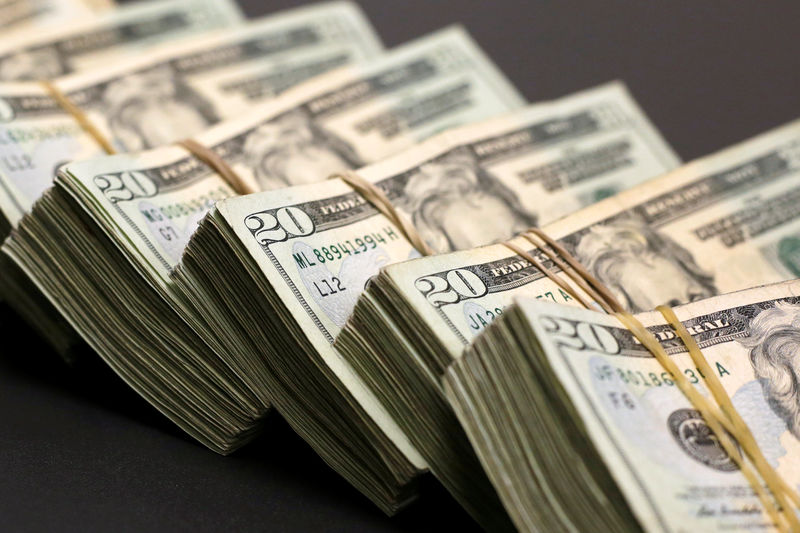By Peter Nurse
Investing.com - The dollar weakened in early European trading Monday, with riskier currencies back in vogue as U.S. Treasury yields stabilized after last week’s hefty selloff in global bond markets.
At 3:55 AM ET (0755 GMT), the Dollar Index, which tracks the greenback against a basket of six other currencies, was down 0.1% at 90.752.
EUR/USD rose 0.1% to 1.2090, after dropping 0.9% at the end of last week, the most since April. GBP/USD climbed 0.4% to 1.3991, while USD/JPY was largely flat at 106.56, near the six-month high of 106.69 touched Friday despite Japan's factory activity expanding at the fastest pace in over two years in February.
The risk-sensitive AUD/USD rose 0.8% to 0.7770, following a 2.1% plunge on Friday, as the Reserve Bank of Australia said it would buy twice the normal volume of long-term bonds at this week's regular operation. The RBA's policy-making committee meets on Tuesday. NZD/USD climbed 0.9% to 0.7290, recovering some of Friday's 1.9% slide, while USD/CAD fell 0.5% to 1.2680.
Currency markets have recently been taking their cues from the global bond market, where yields have surged in anticipation of an accelerated economic recovery and the expectation that central banks will have to tighten monetary policy earlier than had previously been expected.
The benchmark 10-year U.S. Treasury yield currently trades around 1.41%, stabilizing having briefly traded above 1.60% last week and giving higher-yielding currencies some breathing space.
U.S. Federal Reserve Chairman Jerome Powell has recently tried to douse the early tightening fires, saying the central bank would look through any near-term inflation spike, but data this week could easily create another spark.
He will speak again at the end of the week, but attention will quickly switch to the closely followed monthly payrolls data on Friday.
“Market corrections after long, benign periods of risk-taking tend to be short, sharp affairs and until the Fed chooses to verbally intervene in the bond market, we would say risk assets remain vulnerable over the week ahead and the dollar could enjoy a brief corrective rally,” said analysts at ING, in a research note.
Elsewhere, USD/CNY fell 0.2% to 6.4627 after China's factory activity expanded at the slowest pace in nine months in February as weak overseas demand and coronavirus flare-ups weighed on output, according to a business survey.
The Caixin manufacturing PMI fell to 50.9 in February, from 51.5 in Januar, registering its thrid straight monthly drop.
